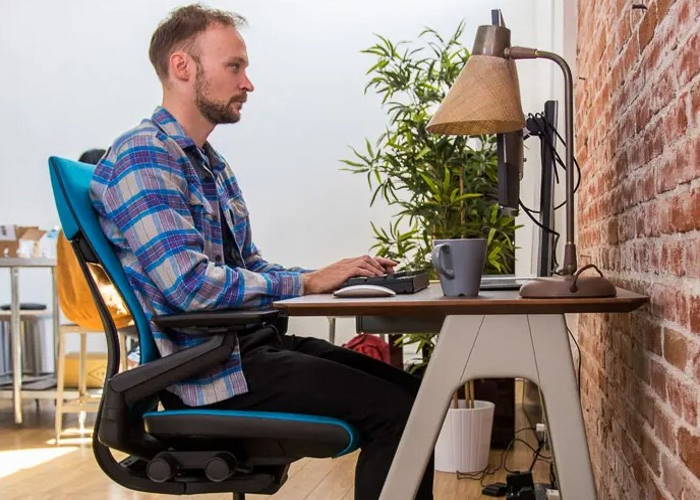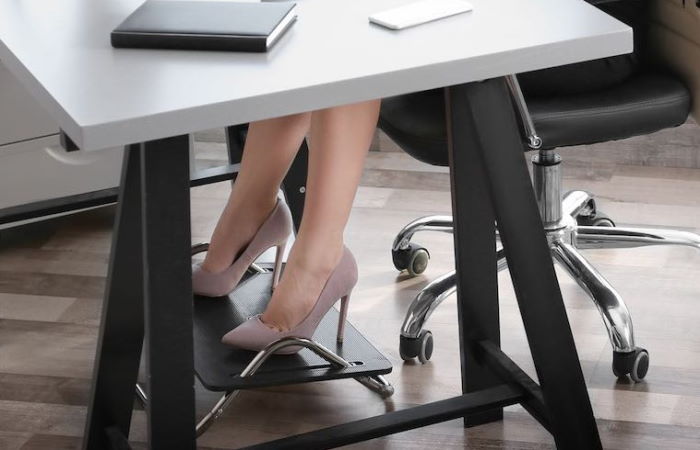How to Sit Properly At Your Desk

Does your job require you to sit for long periods of time? If you answered yes, you need to know how to sit properly at your desk to minimize the adverse effects of sitting on your body. The human body is built to move, and increased periods of inactivity can cause chronic neck and back pain, muscle stiffness, and other long-term adverse health effects. It’s never too late to correct this and promote good posture.
Benefits of Sitting Properly at Your Desk
Good posture is defined as any position that puts the least strain on your head, neck, shoulders, and back. Here are some of the benefits of knowing how to sit properly at your desk:
- It promotes efficient use of the muscles and ligaments.
- It ensures proper alignment of the bones and joints.
- It reduces stress on the spine.
- It prevents injuries such as strains and sprains.
- It boosts your overall appearance and confidence.
How to Sit Properly at Your Desk
These are essential guidelines to remember when working at your desk to promote correct posture.
1. Keep your pelvis in a neutral position.
Start with your pelvis when you are figuring out the best sitting position at work. Your pelvis must be in proper alignment with your buttocks against the chair. Your buttocks must be flat against the chair so that your pelvis is parallel to the ground.
You know when your pelvis is in the correct position because your lower back won’t be excessively arched, and you won’t be hunched over either.
2. Align your ears, shoulders, and hips.
Keep your ears, shoulders, and hips aligned to support the natural curve of your spine. This position is best for your spine because it won’t cause unnecessary stress or pain. Use this particular technique to avoid injury to your spine.
3. Maintain lower back curvature.
Whether you are standing or sitting, notice a small curve on your lower back. This is called the lordotic curve. To sit properly at your desk means that you should maintain this natural but small curve on your back.
It is common for most people to hunch over when seated at a desk. This position can put you at risk of injury because your back is curved in the opposite (non-natural) position. Among the injuries you are at risk of are disc herniation, sprains, and strains to your spine.
An easy trick to correct this tendency to hunch over while sitting at your desk is to use a small pillow. You can also roll up a towel and place it on your lower back for support.

4. Maintain a 90-degree angle on your hips and knees.
Your knees must be aligned at a 90-degree angle against your hips while you are seated. This position maintains the neutral position of your spine. If your chair is too low and your knees are higher than your hips, it can put unnecessary stress on your hips and lower back. The same goes when you are perched too high and your knees are too far from your hips.
Assuming either one of the two positions mentioned above can cause stiffness and chronic back pain in the long run. Thus, it is important that you correct this position and aim for proper alignment.
5. Distribute weight evenly on your hips.
Whether it is a natural tendency or out of bad habit, a lot of people tend to lean over to one side when they are working at a desk. This position is not recommended as it can hurt your spine in the long run. Prolonged leaning to one side can lead to disc herniation and scoliosis.
Make sure that your weight is evenly distributed on both sides of your hips. This position also keeps you comfortable throughout the day.
6. Plant your feet on the ground (or use a footrest).
Invest in a chair that is the ideal height and allows you to plant your feet firmly on the ground. If this is not possible, use a stool as a footrest (so you can maintain the 90-degree angle between your hips and knees).
If your toes are barely touching the floor, it can cause pain in the leg, hip, and pelvic muscles over time. You can also experience the same kind of pain when you cross your legs while seated. However, crossing your legs is more dangerous because it puts additional pressure on your lower back. The cross-legged position also promotes the tendency to lean towards one side of your body.

7. Your forearms must be parallel to the ground.
Your forearms should be positioned at an angle parallel to the ground. Rest your elbows on your desk to ease the stress on your shoulders and upper back.
Position your keyboard at an appropriate distance from your body, so you are not forced to hunch over. It is also worth pointing out that you need to have adequate space on your desk. When it is too cramped, it forces your body to assume an awkward position. However, if the keyboard is too far away, it can cause strain on your shoulders and arms if you have to stretch for them.
8. Keep your head in a neutral position.
Your head must be in alignment with your spine. A forward head posture is a common mistake among those who work a desk job. This head position can cause additional strain on your neck as it has to support that extra weight. When your head is not neutral, it can also lead to serious health issues such as arthritis of the neck, muscle spasm, chronic fatigue, neck pain, back pain, headaches, migraines, and TMJ.
9. Maintain proper eye level.
Keep your monitor at the proper eye level. You must position your eyes at the top portion of the monitor. If it is too low or too high, it can cause strain on your neck. To prevent eye strain, you should also maintain a 15 to 25-inch distance from the monitor.
Conclusion
It does not take a rocket scientist to understand the benefits of good posture while sitting at your desk. Just listen to your body. How do you feel at the end of each workday? If you’re suffering from chronic pain and fatigue, you must do something about it. You can invest in a supportive chair and other accessories that promote desk ergonomics. However, the most crucial step you can take is to know how to sit properly at your desk.






